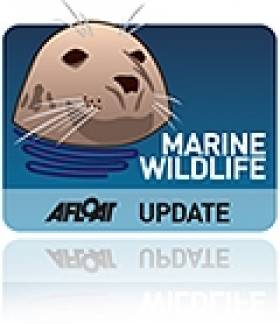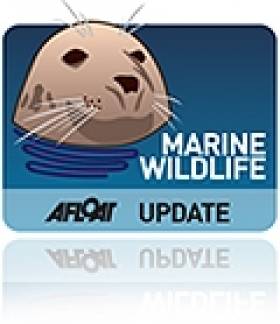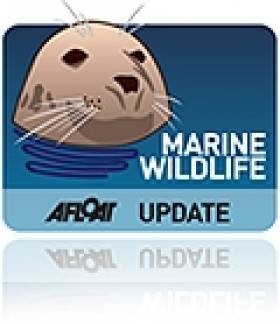Displaying items by tag: Whales
New Pontoon Key to Saving Stranded Whales, Dolphins
A new pontoon intended to refloat marine animals such as beached whales and dolphins along the Atlantic seaboard was demonstrated at the weekend ahead of the Galway Science & Technology Festival.
The Irish Times reports that divers, scientists and local volunteers were among those participating in the training exercise on Gurteen beach, near Roundstone, which involved rescuing and refloating a dummy pilot whale.
Dr Simon Berrow of the Irish Whale and Dolphin Group (IWDG) which ran the exercise said he hoped other coastal communities would follow the example with their own training sessions, given the growing number of strandings along Ireland's west coast.
The new pontoon - which was put on display in the festival exhibition at NUI Galway on Sunday - was purchased with funds raised by the local community and a BBC television team producing the latest series by popular adventurer Monty Halls.
Whale Breaks Long Distance Record for Mammals
A humpback whale has broken the world record for long-distance travel by any mammal.
The female whale swam at least 9,800km from the Atlantic Ocean off the coast of Brazil to Madagascar in the Indian Ocean in search of a mate, marine biologists reported earlier this week.
Humpback whales are known for long-distance migrations between their feeding and breeding grounds, but such journeys do not usually take them east or west, or much further than 5,000km.
Scientists as yet do not know whether the female's incredible journey was intentional or the result of a navigational error. Previously recorded long-distance movements have all been of male whales.
Monty Halls Gives Talk on 'Capturing Giants'
Renowned diver Monty Halls is set to present a public talk on his marine animal work filming whales, sharks and dolphins around the world tomorrow night (7 October).
Halls, who has been in Ireland since April making his latest documentary series for the BBC, has been assisting the Irish Whale and Dolphin group (IWDG) with its research on whales, dolphins and basking sharks in Irish waters.
The diver, filmmaker and former Royal Marine, who is also a popular motivational speaker and performance coach, will talk on his experiences filming and diving with marine mammals around the world, and will surely provide some great entertainment.
The talk, part of the Tales of the Whales Lecture Series organised by the IWDG and the Galway-Mayo Institute of Technology (GMIT), begins at 8pm on Thursday 7 October in Lecture Room 1000 at GMIT, Dublin Road, Galway. The event is free and all are welcome to attend.
Whale Sighting confirmed off Rathlin
The Irish Whale and Dolphin Group believes that the whale spotted off Howth and Dublin Bay last week may be the same marine animal spotted at the foot of cliffs on Rathlin Island. The whale is thought to be moving down the Irish Sea, a rare behaviour for a humpback. Pictures of the sighting have allowed the IWDG identify it as a humpback, but they are waiting for higher-resolution images to match it with its counterpart in Howth.
The whale was spotted off Rathlin on July 11, three days before it surfaced near Dublin. The IWDG has said: "This is an extremely important sighting as it is only the second validated sighting of this species in N. Irish waters.
"In fact, as the previous sighting was closer to Colonsay, Islay, Scotland, we could easily argue that this is in fact the 1st record of a humpback whale in N. Irish waters."
Whales can cover more than 50 miles a day and migrate more than 5,000 miles in a year.
More info on the current crop of sightings can be found on the IWDG website, HERE.
Anyone spotting a whale is required by law to give them at least 100 metres room and travel parallel to their track, unless you want to end up like an unlucky pair of South African sailors, dismasted by a breaching Right Whale off Cape Town this week.
Irish Whale and Dolphin Group Online Conference Tomorrow
Irish Whale and Dolphin Group (IWDG) Sightings Co-ordinator Pádraig Whooley will be presenting at this weekend's TEDX event in the West Cork Hotel, Skibereen, Co. Cork tomorrow which will be streamed live on the internet and can be viewed here.
































































